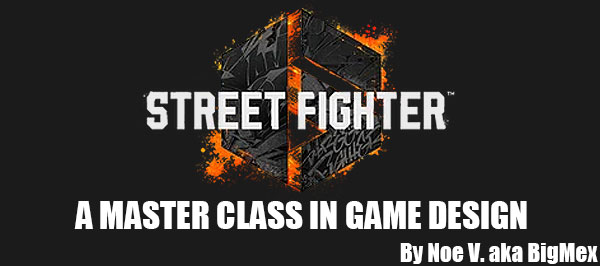
In the previous blog I mentioned that it took about 10,000 hours to master a skill. Repetition was a key element of creating muscle memory, the ability to recall and perform actions, and movements without conscious effort. In order to be good at Street Fighter, or any fighting game, then you had to have that muscle memory. How was it possible that Street Fighter 6 would get brand new game players into the genre when it required that much time to get good? Capcom developed multiple solutions to this challenge. Director Takayuki Nakayama addressed one of those issues right away. He introduced Modern controls to the game. This was something that other studios like ARIKA, and their Fighting EX Layer had been using as well. Traditional fighting games required specific joystick, and button combinations in order to perform a special move. Things like a half circle, counter-clockwise, rotation of the joystick, with a perfectly timed button press. To new players this was like asking them to pat their head, and rub their tummy while riding a unicycle. There was no way a skill like that could be learned, let alone performed right away. Every character in every fighting game had a variation of these joystick, and button combinations. Modern controls allowed players to map certain moves to simpler button presses, without requiring too much directional input. This opened the door for access to new players, and was especially beneficial to persons with disabilities. At the same time long-time players could still play the game using Classic controls, and jump right into the title. This was just one of the things that studio did in order to teach audiences how to play.
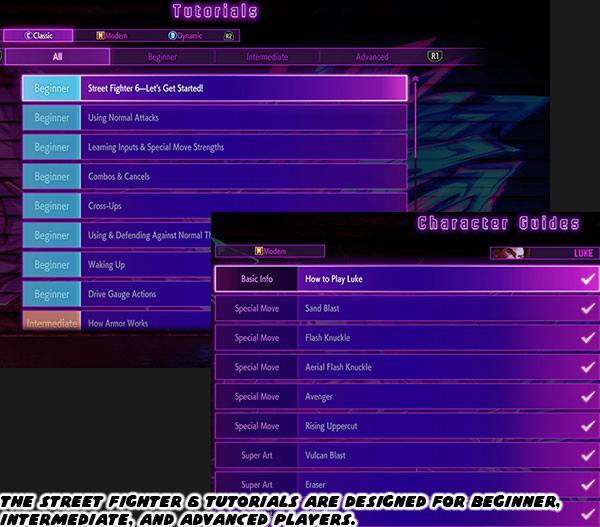
From my time working in a college I learned that there were four main learning types; Visual, Auditory, Read/Write, and Kinesthetic. Some people could learn how to play fighting games by watching, some by reading about them, some by listening. Some learned mainly by trial, and error. These learners just pressed buttons, and saw what happened. Most people had one main method of learning, but sprinkled in a little bit of the other learning styles to help support it. Mr. Nakayama’s team put a fully realized Tutorial in Fighting Ground; the Arcade mode of SF6. Returning players could learn the subtle changes in this game when compared to SFV. Brand new players could learn every move, combination, and even strategy in this fleshed-out training mode. Yet this was only the first step in onboarding a new generation of players. What the team did next was far more impressive. Reading about strategy, seeing some videos, and having some how-to portions could help a certain type of learner. This would not help every person getting into the game. Capcom managed to build a game that would appeal to every learning style, and moreover help audiences reach their 10,000 hours in order to master. They accomplished this by breaking every step of the process into a smaller game in, and of itself.
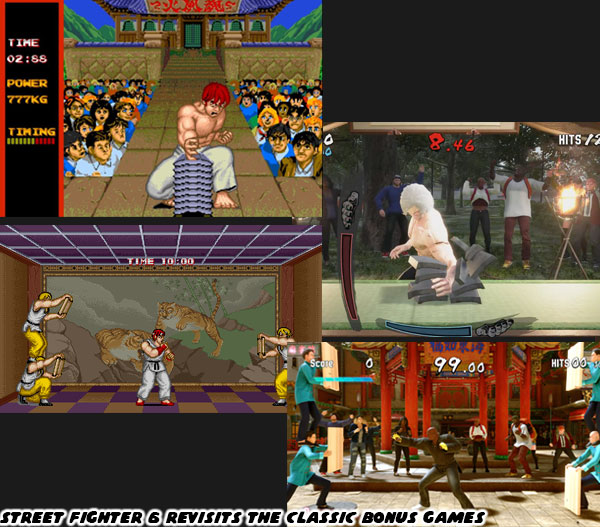
For decades the best game experiences could only be found outside of the home. The hardware running arcade games were vastly superior to consoles for near 30 years. There were many reasons to play at the arcade, in addition to the experience of something you couldn’t get at home the best players were immortalized by having their initials saved on the leaderboard. In the early days the scores would be reset when the game was turned off. Eventually publishers began releasing games with internal batteries so that the best players would stay saved for weeks, or months on end. Some players built their reputations by traveling to various arcades, and setting the high scores, and even world records. The best gamers were treated like mini celebrities. They would get write ups in newspapers, and magazines, and even turn up on TV. This was before the rise of the
Twin Galaxies record keeping forums. Long time arcade visitors were familiar with bonus stages. They were ways of padding the scores, perhaps earning an extra life, or other bonus in the process. This was the case in early fighting games. Bonus stages also helped break up the game play experience. A variation of almost every bonus game from the SF series had made its way into SF6. It turned out this was more than a nostalgia call out.
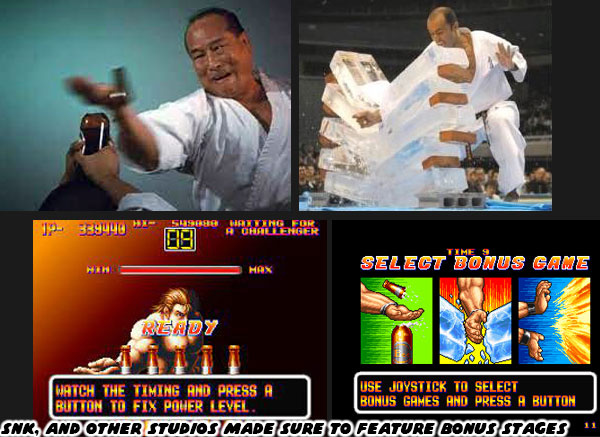
The purpose of the bonus games in fighters were designed with more than achieving a high score. In the early ‘90s one of the Capcom rivals was SNK. They had a game series called the Art of Fighting, it was the cousin of the King of Fighters franchise. The developers used the bonus games to reinforce the button/joystick commands in order to perform super moves. If a player completed the bonus stage then they were rewarded by having their life bar, or energy meter increased. This made it a little bit easier to finish the game, and of course achieve a higher score. The idea of teaching advanced controls through bonus games was nothing short of inspired. What Capcom did in SF 6 was take that idea, and expand upon it. The studio turned bonus games into Part Time Jobs in the World Tour mode. Each part time job actually served a purpose. One of the early ones was obvious to me, but might not have been to new players.
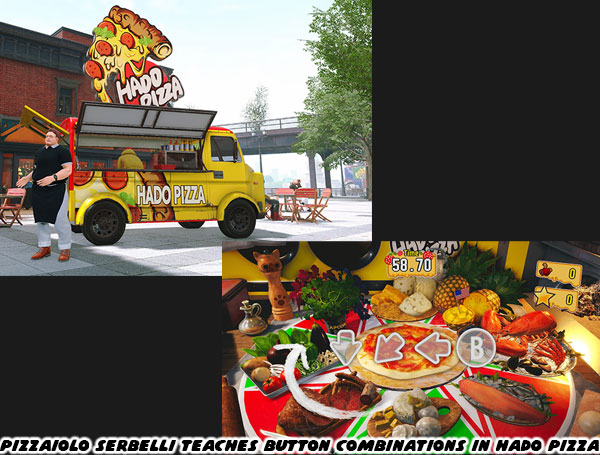
The non-playable character Pizzaiolo Serbelli was new addition to the SF universe. He was a vendor in Metro City, and passionate about Hadou Pizza his food truck business. He would pay you by how many pizzas you could assemble within a certain time limit. The random joystick, and button combinations that would pop up on screen were actually the Classic controls for the SF cast. The pizzas would be made if you could repeat the commands on screen accurately. Early on you wouldn’t really get punished by failing to get the combinations right the first time. You were allowed as many redos as you wanted. Of course the more combinations you could get through the more you would be paid. By repeating these button combinations again, and again, audiences were developing muscle memory. Best of all, it didn’t matter what traditional SF character was their “main.” The combinations that they were learning could be applied to almost every character. This was an important part of getting those necessary 10,000 hours.
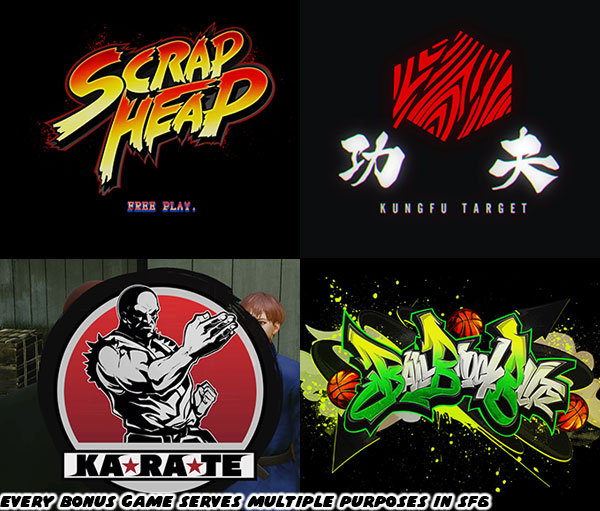
The difficulty of the part time jobs would increase slightly the further you progressed through the game. Players were rewarded with money that they could use to purchase new costumes, items, and food for their character. If they needed just a little bit of money they could try a part time job on the easy setting. Intermediate players had a normal option, and the hard setting was the biggest risk/reward for money. This was only one way in which SF6 was teaching new players how to enjoy the fighting game experience. Repetition was a big part of getting good at the title. Rather than push audiences into the deep end, and let them sink or swim, the World Tour mode allowed audiences to choose the majority of their battles. As players traveled through Metro City they would see which pedestrians they could challenge to a fight. There was a number over their head to let them know if they were a level 1 opponent, which was the lowest energy, slowest attack speed, and least aggressive, all the way to Level 99 which was very difficult to defeat. Players could also see the benefits of defeating an opponent. They might get money, or earn an item, or unlock a piece of a costume. There were sometimes secret objectives to earn a reward, such as be the first to land a strike, throw 3 times, or do 5000 points of damage. By allowing players to go at their own pace, figure out how easy, or difficult the different level opponents were then they could pace themselves accordingly.
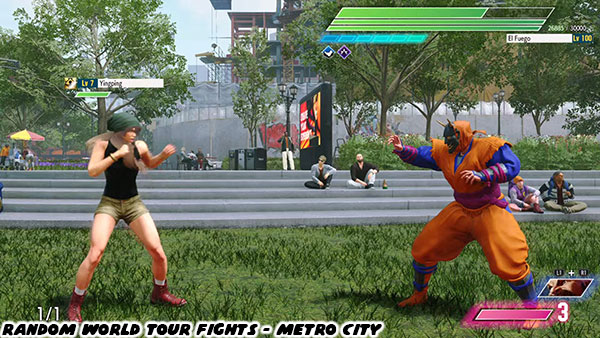
Early on in the World Tour mode the citizens of Metro City were fairly low level opponents. They were easy to defeat, and did not require special attacks, or any advanced strategies. In fact you could beat the majority of opponents if all you did was press one attack button over, and over. The challenge was no where as difficult as it would be walking into an arcade, and playing against the default game AI, or a human opponent. I was able to beat the Arcade mode, on Normal setting with the regular cast of SF characters by spamming one or two buttons over and over. The computer AI would adapt to your techniques, button inputs, and adjust accordingly. If you used simple attacks, and button combinations then it took it “easy” on you. If you instead fired off complex combinations then subsequent opponents would be much more difficult. This was a refreshing change of pace from the way I learned how to play. I never enjoyed playing against human strangers at the arcade, it filled me with anxiety. Playing against my brothers, and friends was okay with me. Both the Arcade, and World Tour modes in SF6 were easy to pick up, and play even for the most novice gamer. At the start of the World Tour story audiences were free to explore a portion of Metro City, and start fights with just about anybody. It was explained in the story mode that the people of the city were down for a fight. It was a tradition that went back to the previous mayor Mike Haggar. No hard feelings if somebody caught a beating. Clearly this was a fictional version of the US where people didn’t shoot you for throwing the first punch!
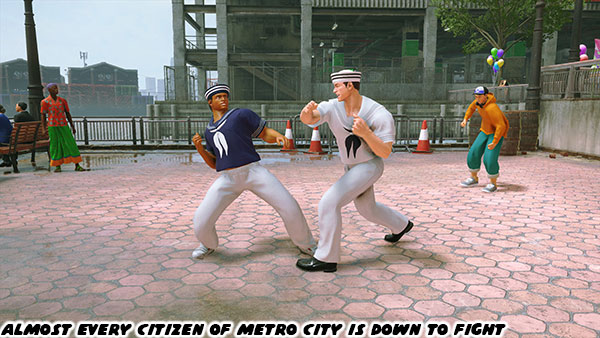
The game wouldn’t be a very good teacher if all it did was let the player slowly progress through the story. Just as you wouldn’t become a good musician if you only played one note over, and over, or become a good basketball player if all you did was dribble a basketball in one spot. Good teachers build on the things you already know, and have you practice new techniques. A music teacher might have you site read entirely new music as an exercise. Or a basketball coach might have you practice drills that involved running, and dribbling backwards. These sudden drills were a challenge, but crucial for developing muscle memory. In order to get to help get those 10,000 hours SF6 randomly challenges the player. From time to time the gamer will be jumped by gang members. Maybe just 1-vs-1 at first, but the further you progress that may be as many as 1-vs-8, not quite fair odds at all. But like the start of the game the first gang members you encounter are very weak. Mostly Level 1 types, unknown characters that were trying to build a rep.
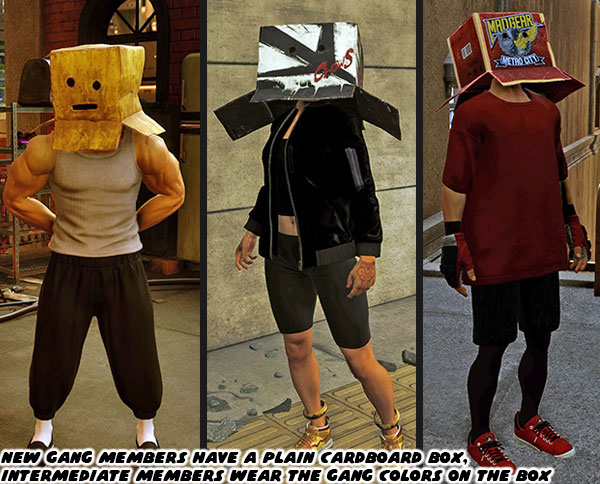
The build-a-character engine that players used to create their avatar in the World Tour mode was also used to great effect by the developers at Capcom. They created a seemingly endless supply of random citizens, and gang members to fight. These characters might be distinguished by the color of their skin, outfits, heights, and body type. Sometimes pedestrians, or other gang members would become spectators in the background. This meant never having the exact same audience no matter how many times you played through an area. This randomness, and diversity helped make every fight feel unique. But I digress. The gang members would jump you, and strike first. Being outnumbered, and attacked from both sides was not fair. There was a lesson in doing this to players. It taught players that they would not always be able to block, or parry an attack. They would be getting hit by strong attacks, combination attacks, and even “cheap” throws. The important thing was to not panic while being attacked. You had to look for an opening, and counter as quickly, and efficiently as you could. Even the best players in the world knew that they were not untouchable. It was crucial to remain calm even if you lost more than half your health in a sudden barrage. You could always make a come back, and bury even the strongest rivals. As I had mentioned in the previous blog, fighting on instinct was the same thing that pro boxers did when they were knocked silly, and battling in “survival mode.” Also nothing built more confidence in a player than surviving a sudden wave of gang members, and coming out victorious. Doing this over, and over in World Tour mode could help make players less fearful of an encounter, and get them to challenge bigger, and stronger opponents.
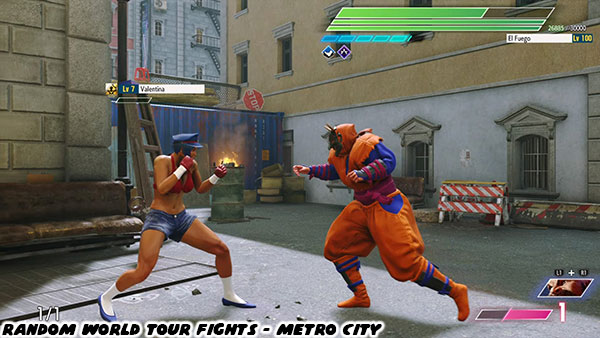
The road to 10,000 hours was absolutely possible thanks to how carefully the World Tour mode was crafted. I haven’t even begun to scratch the surface as to how it was prepping a new generation of fans. I’ll explore the other things that Capcom accomplished in the next blog. If you are a long time fan of Street Fighter then I would like to hear your impressions of SF6. If you have never played any game previously then tell me your experiences in the comments section please. As always if you would like to sponsor me
please visit my Patreon page and consider donating each month, even as little as $1 would help make better blogs and even podcasts!




















No comments:
Post a Comment